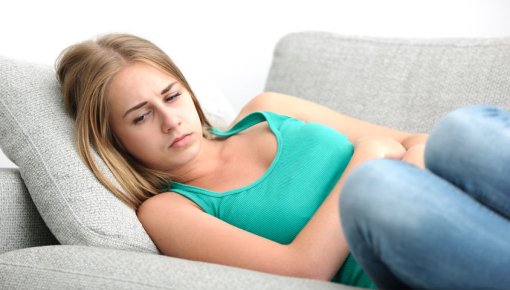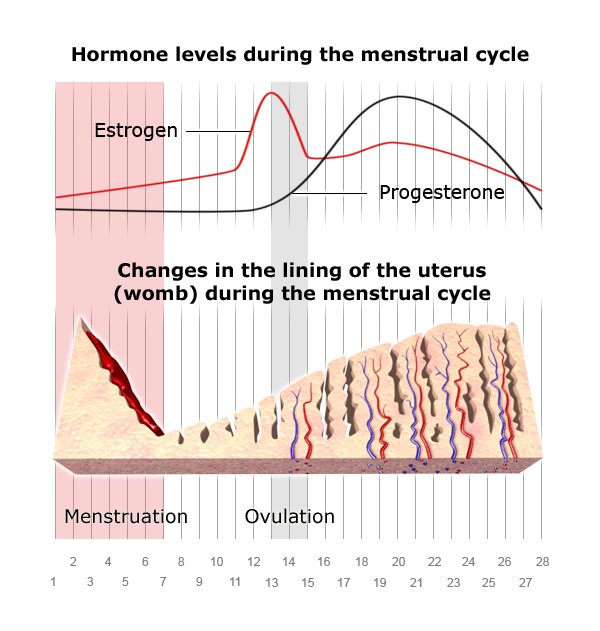Armour M, Ee CC, Naidoo D et al. Exercise for dysmenorrhoea. Cochrane Database Syst Rev 2019; (9): CD004142.
Bofill Rodriguez M, Lethaby A, Farquhar C. Non-steroidal anti-inflammatory drugs for heavy menstrual bleeding. Cochrane Database Syst Rev 2019; (9): CD000400.
Burbeck R, Willig C. The personal experience of dysmenorrhoea: an interpretative phenomenological analysis. J Health Psychol 2014; 19(10): 1334-1344.
Chen CX, Barrett B, Kwekkeboom KL. Efficacy of Oral Ginger (Zingiber officinale) for Dysmenorrhea: A Systematic Review and Meta-Analysis. Evid Based Complement Alternat Med 2016: 6295737.
Chen CX, Draucker CB, Carpenter JS. What women say about their dysmenorrhea: a qualitative thematic analysis. BMC Womens Health 2018; 18(1): 47.
Chen CX, Shieh C, Draucker CB et al. Reasons women do not seek health care for dysmenorrhea. J Clin Nurs 2018; 27(1-2): e301-e308.
Deutsche Gesellschaft für Gynäkologie und Geburtshilfe (DGGG). S3-Leitlinie Hormonelle Empfängnisverhütung. AWMF-Registernr.: 015-015. 2019.
Jo J, Lee SH. Heat therapy for primary dysmenorrhea: A systematic review and meta-analysis of its effects on pain relief and quality of life. Sci Rep 2018; 8(1): 16252.
Ju H, Jones M, Mishra G. The prevalence and risk factors of dysmenorrhea. Epidemiol Rev 2014; 36: 104-113.
Latthe PM, Champaneria R. Dysmenorrhoea. BMJ Clin Evid 2014: pii: 0813.
Marjoribanks J, Ayeleke RO, Farquhar C et al. Nonsteroidal anti-inflammatory drugs for dysmenorrhoea. Cochrane Database Syst Rev 2015; (7): CD001751.
Mohammadi MM, Mirjalili R, Faraji A. The impact of omega-3 polyunsaturated fatty acids on primary dysmenorrhea: a systematic review and meta-analysis of randomized controlled trials. Eur J Clin Pharmacol 2022; 78(5): 721-731.
Osayande AS, Mehulic S. Diagnosis and initial management of dysmenorrhea. Am Fam Physician 2014; 89(5): 341-346.
Pattanittum P, Kunyanone N, Brown J et al. Dietary supplements for dysmenorrhoea. Cochrane Database Syst Rev 2016; (3): CD002124.
Proctor M, Murphy PA, Pattison HM et al. Behavioural interventions for primary and secondary dysmenorrhoea. Cochrane Database Syst Rev 2007; (3): CD002248.
Smith CA, Armour M, Zhu X et al. Acupuncture for dysmenorrhoea. Cochrane Database Syst Rev 2016; (4): CD007854.
Wong CL, Farquhar C, Roberts H et al. Oral contraceptive pill for primary dysmenorrhoea. Cochrane Database Syst Rev 2009; (4): CD002120.
IQWiG health information is written with the aim of helping people understand the advantages and disadvantages of the main treatment options and health care services.
Because IQWiG is a German institute, some of the information provided here is specific to the German health care system. The suitability of any of the described options in an individual case can be determined by talking to a doctor. informedhealth.org can provide support for talks with doctors and other medical professionals, but cannot replace them. We do not offer individual consultations.
Our information is based on the results of good-quality studies. It is written by a team of health care professionals, scientists and editors, and reviewed by external experts. You can find a detailed description of how our health information is produced and updated in our methods.


